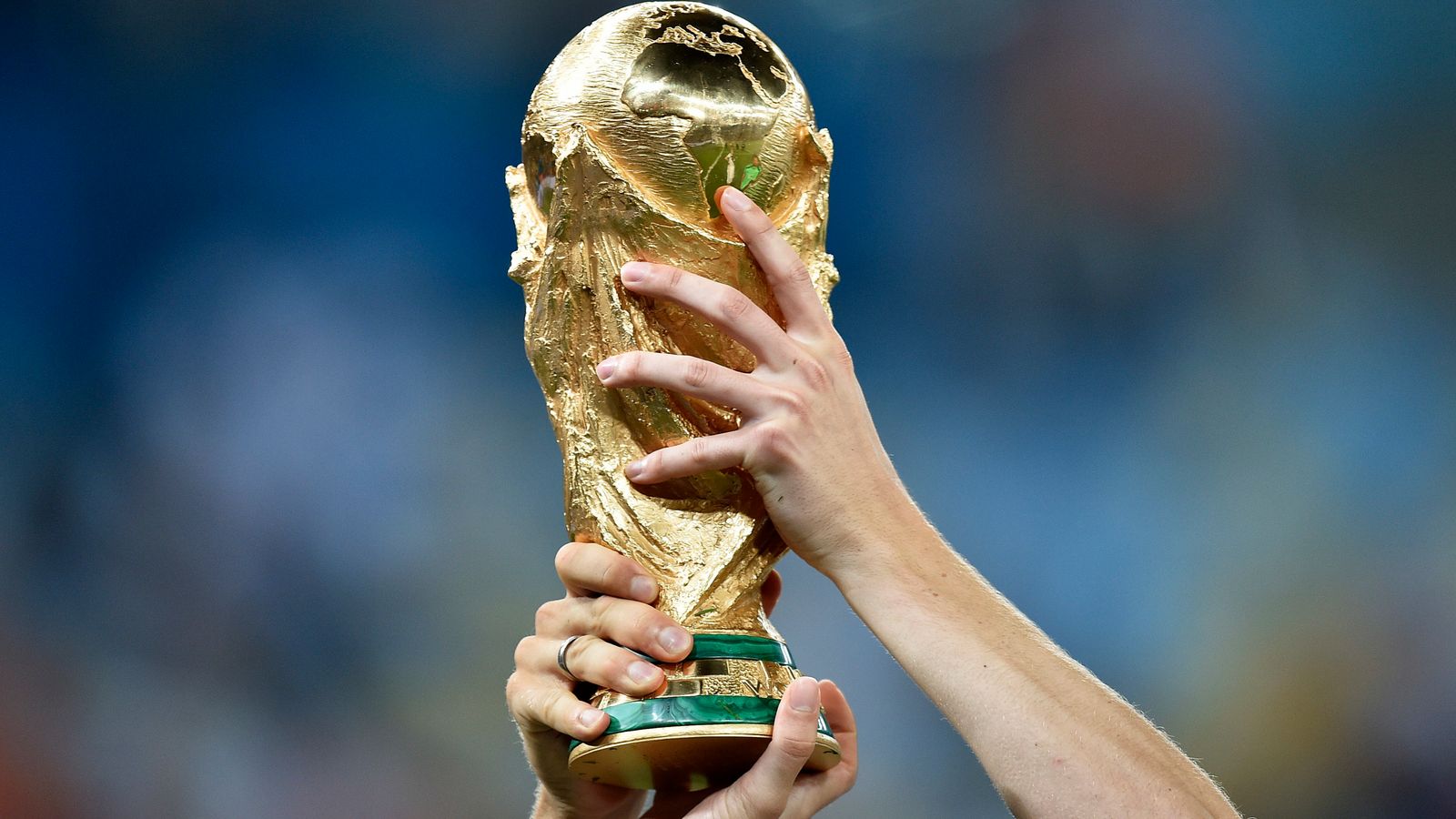Australia has done it again. With a low save to his right to deny Peru’s Alex Valera from the penalty spot, dancing goalkeeper Andrew Redmayne secured cult hero status, launched several memes, and booked the Socceroos’ place at the 2022 World Cup.
The win against the more fancied Peru clinched a fifth consecutive berth at the sport’s biggest party, 16 years after the Socceroos ended decades in the men’s football wilderness with a similarly heart-stopping win on penalties against Uruguay.
Now, the excitement builds. If you’ve not been paying attention since 2018, here are five things you need to know about the Socceroos and the 2022 World Cup.
1. Qualifying was tough this time
The Socceroos’ journey to the final qualifier against Peru on Tuesday night was tough. On the final whistle, Graham Arnold, the Socceroos manager, noted that of Australia’s 20 qualification matches, 16 were played away from home, mostly due to the Covid-19 pandemic.
Australia got off to a good start in their Asian confederation qualifying group but fell behind Saudi Arabia and Japan after a few crucial draws against weaker teams. They were finishing third in the group stage and set up a do-or-die contest against the United Arab Emirates for a chance to play fifth-placed South American qualifiers Peru, who had humbled the Socceroos at the last World Cup.
Last week’s UAE game ended in a closely fought 2-1 win, with Ajdin Hrustic’s winner coming late in the match. And on Tuesday morning, after more than 1,000 days in search of qualification and 120 goalless minutes against Peru, Australia secured another World Cup berth.

2. Holding the World Cup in Qatar will be unprecedented
This will be the first Fifa World Cup held in the Middle East, and, kicking off on 21 November; it will also be the first held during the northern hemisphere’s winter months.
Much has been made about the eight stadiums in and around Doha equipped with outdoor air-conditioning systems to keep conditions manageable for players and fans. That decision was taken into account Qby atar’s hot and humid climate. In November, though, temperatures in Qatar are also cooler, averaging about 24C.
3. Human rights groups have criticized the decision
Human rights groups have condemned the decision to hold the World Cup in Qatar. Much of the criticism has been focused on the country’s record on migrant workers, including approximately 40 known to have died while employed building the stadiums where matches will be played.
The Guardian last year reported that more than 6,500 migrant workers from India, Pakistan, Nepal, Bangladesh, and Sri Lanka have died in Qatar since it won the right to host the World Cup, according to data collected from government sources. Last month, a group of non-governmental organizations said Fifa should pay reparations to migrant workers whose human rights have been compromised by the Qatar World Cup.
Socceroos midfielder Jackson Irvine, goalkeeper, and captain Mat Ryan are among those who have voiced concerns as the players consider how and if they might take a stand. Some other national teams have already worn T-shirts with human rights messages leading up to the tournament.
Qatar’s government has responded to criticisms of human rights groups, saying it has reformed labor practices and claiming it has made significant progress on tackling the effects of heat stress.
England manager Gareth Southgate has spoken out about Qatar’s record on LGBTIQ and women’s rights.
4. What are the Socceroos’ chances in their group?
Australia has qualified for Group D alongside France, Denmark, and TunisiFrancence, ranked third in the world and the current holders, and Denmark, ranked 11th. Recent semi-finalists at h e, Eu,ros would be firm favorites to finish in the top two spots and progress to the knockout stage.
Tunisia is ranked 35th, while Australia is 42nd. Australia’s group at the 2018 tournament in Russia was almost identical, with the Socceroos losing 2-1 to France and earning a solid draw against Denmark. However, on paper, the Socceroos squad is arguably weaker heading into this World Cup.
Australia’s best performance at a World Cup was a heartbreaking 1-0 loss in the round of 16 against Italy in 2006. And that was with a star-studded side, often described as the Socceroos’ “golden generation”.
It will take several exceptional performances and a fair bit of luck to match that.
5. Where and when to watch
The good news is that public broadcaster SBS holds the Australian World Cup rights and promises to show all 64 matches live and for free.
As far as timing, it’s a bit of a mixed bag. Australia plays France at 6 am AEDT on Tuesday, 22 November. The crucial game against Tunisia is at the prime time of 9 pm on Saturday, 26 November. Finally, the Socceroos play Denmark at the brutal hour of 2 am on Wednesday, 30 November.
The knockouts will also require serious viewing commitment, with most matches to be played at 2 am or 6 am.
The World Cup final at the 80,000-capacity Lusail Stadium will be played on Monday, 19 December, at 2 am (AEDT).











